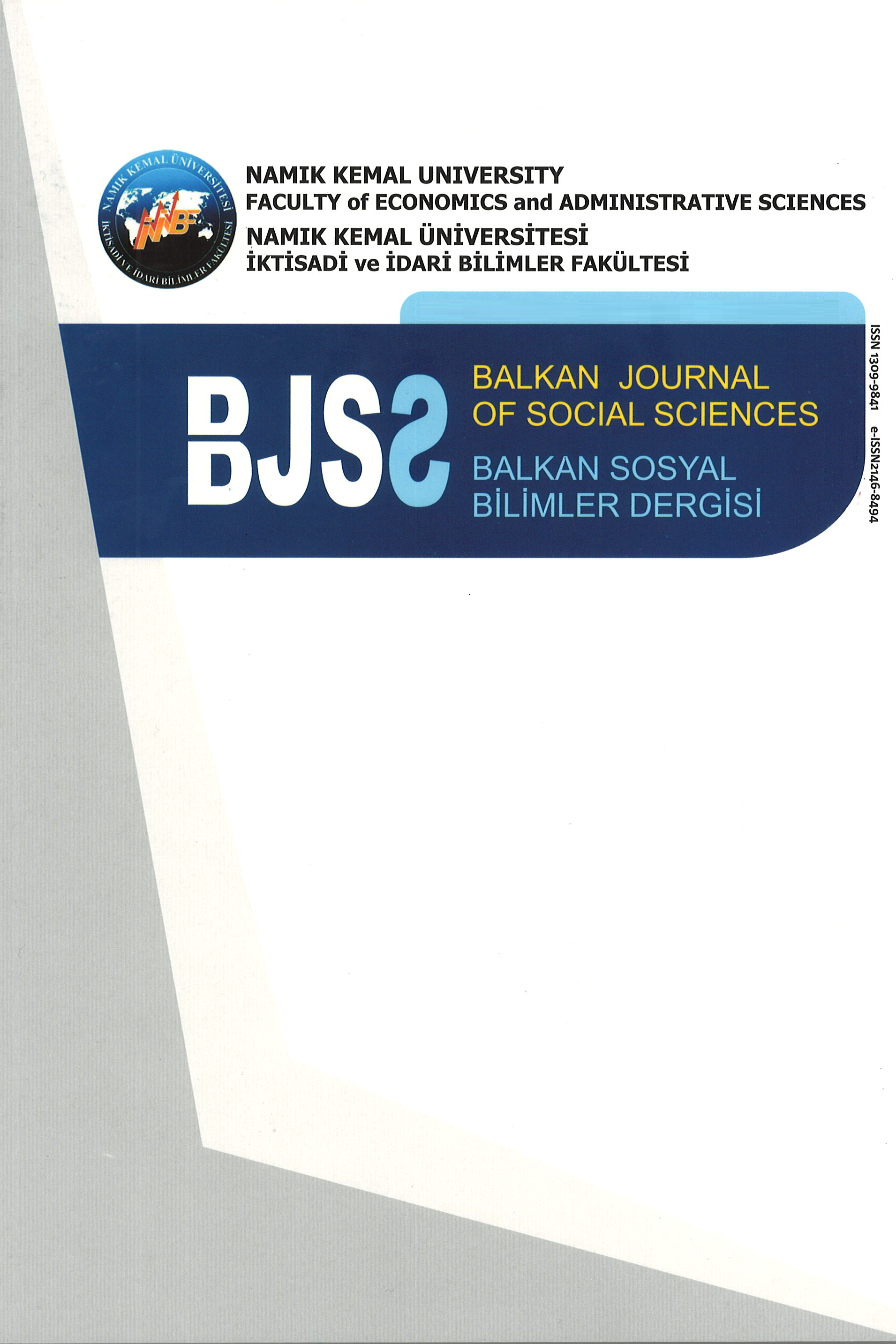Does Higher Inflation Mean Lower Fertility Rate: The Case of Turkey
Inflation, Fertility, Unit root, Co-integration, Long-run Analysis
___
- Anderson, M. D., Botman, M. D. P., & Hunt, M. B. (2014). Is Japan’s population aging deflationary?. International Monetary Fund.
- Barro, R. J. (2001). Human capital and growth. American economic review, 91(2), 12-17.
- Başkaya, Z., & Özkılıç, F. (2017). Türkiye'de Doğurganlıkta Meydana Gelen Değişimler (1980-2013). Uluslararası Sosyal Araştırmalar Dergisi, 10(54), 405-423.
- Berber, M., & Artan, S. (2004). Enflasyon ve ekonomik büyüme ilişkisi: Türkiye örneği (No. 2004/21). Discussion Paper.
- Demirtaş, G., & Yayla, N. (2017). Küresel entegrasyonun kadın istihdamı üzerine etkisi: Ampirik bir inceleme. Journal of Yaşar University, 12(48), 339-349.
- Katagiri, M. (2012). Economic Consequences of Population Aging in Japan: effects through changes in demand structure (No. 12-E-03). Institute for Monetary and Economic Studies, Bank of Japan.
- Kaygısız, A. D., & Ezanoğlu, Z. (2021). Demografik değişimin enflasyon üzerindeki etkisi. Siyasal: Journal of Political Sciences, 30(1), 45-64.
- Konishi, H., & Ueda, K. (2013). Aging and Deflation from a Fiscal perspective (No. 13-E-13). Institute for Monetary and Economic Studies, Bank of Japan.
- Orsal, D. D. K., & Goldstein, J. R. (2010, April). The increasing importance of economic conditions on fertility. In Annual Meeting of the Population Association of America, Dallas, Texas.
- Semyonov, M. (1980). The social context of women's labor force participation: A comparative analysis. American Journal of Sociology, 86(3), 534-550.
- Weller, R. H. (1977). Wife’s employment and cumulative family size in the United States, 1970 and 1960. Demography, 14(1), 43-65.
- Yoon, J. (2015). Labor market outcomes for women in East Asia. Asian Journal of Women's Studies, 21(4), 384-408.
- Yayın Aralığı: Yılda 2 Sayı
- Başlangıç: 2011
- Yayıncı: Tekirdağ Namık Kemal Üniversitesi
Portföy Optimizasyonuna Yönelik Ampirik Bir Karşılaştırma: Oyun Teorisi ve Modern Portföy Teorisi
Does Software Piracy Mitigate Poverty?: Evidence from Developing and Latin America Countries
Mustafa ÜNVER, Jülide YALÇINKAYA KOYUNCU
Dünya Açlık Sorunu ve Bu Sorunu Çözmeye Yönelik Yeni Bir Model Önerisi
Trakya Bölgesinde COVID-19 Sonrası Tarım Kredi Kooperatif Marketlerin Stratejileri
Does Higher Inflation Mean Lower Fertility Rate: The Case of Turkey
Jülide YALÇINKAYA KOYUNCU, Yüksel OKŞAK
Globalization and Employment: The Case of Turkey
Orta Gelirli ve OECD Üyesi Ülkelerde Doğrudan Yabancı Yatırımlar ve Kirlilik
AB ÜLKELERİNDE DOĞALGAZ TÜKETİMİ VE EKONOMİK BÜYÜME: İKİ YÖNLÜ PANEL VERİ MODELİ
Açıköğretimde Dezavantajlı Gruplar İçin Destek Arayışı: Bir Engelli Takip ve Yönetim Sistemi
Yasin SANCAR, Eda BOZKURT, Ayşe OKUMUŞ, Ergün AKTÜRK, Erdem KOCADAĞİSTAN
